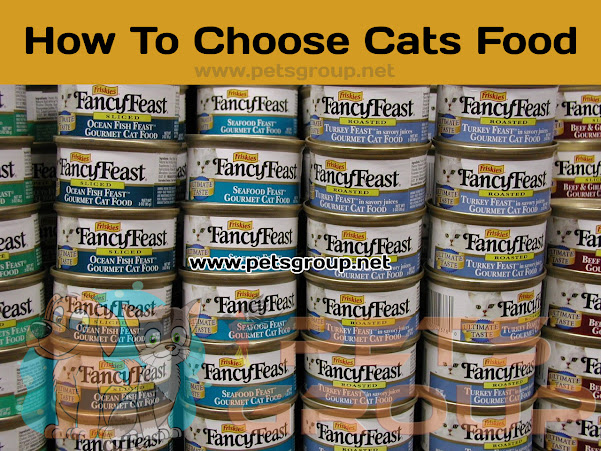Choosing the Best Cat Food for Your Cat
Choosing the best cat food for your cat is the first step toward maintaining good feline health. Choosing the best cat food, however, can be complicated since cats and cat breeds have differing requirements. And regardless of the nutritional value of their food, it needs to be tasty to the cat or they won't eat it anyway.
Cats are carnivorous and although some people give their cats a vegetarian diet, this is generally not a good idea. Cats require certain nutrients that only meat can provide them in sufficient amounts. Taurine, an amino acid, is such a nutrient. A taurine deficiency can lead to heart problems and more. Other such nutrients are vitamin A, vitamin B12, and arachidonic acid, ... Cats need protein first and fat second, so these ingredients need to be present in your cat's food. Protein and fat are derived from meat, meat by-products, poultry byproducts, and fish meal.
One of the first steps to understanding best cat food is learning to read the label. Every label lists ingredients, a guaranteed analysis of protein and other components, and some basic guidelines for feeding your cat. The analysis breaks down the food into percentages of protein, fat, fiber, moisture (or water), ash, and the nutrients magnesium and taurine. The numbers listed are the minimum amount of protein and fat, and the maximum amount of fiber and water. Even so, the protein and fat are crude amounts and may vary in digestibility. That means the cat may not assimilate (or be able to use) the entire amount of protein or fat.
Best Cat Food for Your Cat
Most of the time, cat food is made from waste products of the meat industry. To this corn and wheat are added to bring down the price. Another common ingredient is synthetic cat vomit because cats are attracted to vomited food. Cat food manufacturers have some tricks that will disguise their use of cheap ingredients. For instance, they may break down an ingredient like corn into corn gluten, corn bran, and ground corn. Corn might be the number one ingredient, but breaking it down, moves all three down the ingredient list, making a higher quality ingredient, such as chicken, appear higher on the list.
Read also
How to Build a Dog Ramp for Deck Stairs
For example, one variety of Innova cat food contains this order of ingredients: turkey, chicken meal, potatoes (a starchy food – not a protein), whole eggs, barley, chicken fat, and white rice. This no-corn cat food is an excellent example of quality cat food with wholesome ingredients.
The cat owner who primarily just loves his pet may not need this high-quality (expensive) type of cat food. For them, a nice brand like Nine Lives cat food or Meow Mix cat food will probably be sufficient. In fact, some of the store brands, such as Walmart's Special Kitty, are well tolerated, tasty, and offer a chance to save some money.
Dry food is not good for your cat
Dry food contains high amounts of grain, starchy food that contains a lot of carbohydrates, something which is not present in your cat's natural diet. Canned cat food tends to have a higher percentage of meat than dry food, even though the label may not sound this way. The high percentage of moisture in canned food causes the other percentages to go down.
And what about human food? Cats are real beggars at the table but don't make it a habit of feeding your cat the leftovers of today's meal. Some food that is healthy for us is toxic for your cat. Examples are tomatoes, onions, garlic, chocolate, grapes, and raisins.
What about milk? The cliche says that cats are crazy about milk, but milk is not good for your feline friend. Most cats are lactose-intolerant and get diarrhea from drinking milk.
Some cats have food allergies, but before starting to give them hypoallergenic cat food, have a look at what might have caused those allergies. Did your cat eat a lot of dry food (grains), milk, or leftovers? If yes, try to avoid those.
The most natural diet a cat can have is one of raw meat. In the wild, cats would never eat things like corn or even canned tuna. Instead, they would eat fresh raw meat and meat by-products from small rodents and birds. For these reasons, some cat experts recommend raw meat cat food recipes.
Here is a recipe for homemade cat food:
- Combine two pounds of ground turkey, pork, chicken, or beef, one pound of ground or chopped raw liver, and ½ pound of ground hearts and gizzards.
- To this, if desired, add about a half cup of very well done cooked whole grains.
- Now add ¾ cups of steamed or sauteed finely chopped vegetables, such as celery, carrots, and zucchini.
- Add two tablespoons of olive oil and 3 tablespoons of bone meal from the health food store.
- Finally, open a capsule of fish oil and add that. Keep unused portions refrigerated or frozen.


Comments
Post a Comment